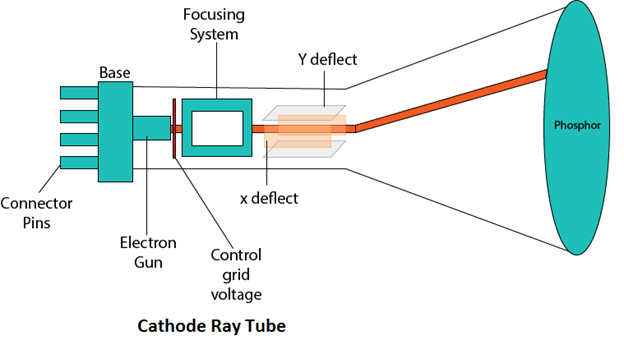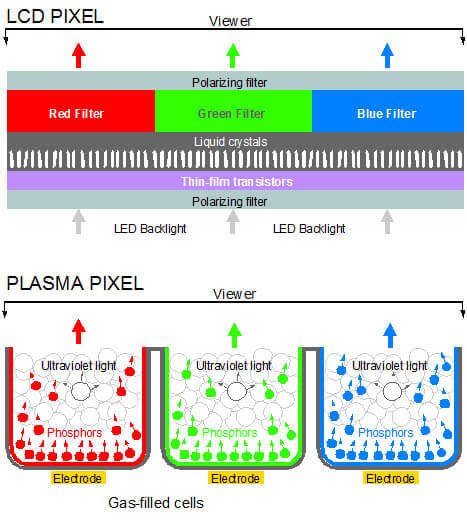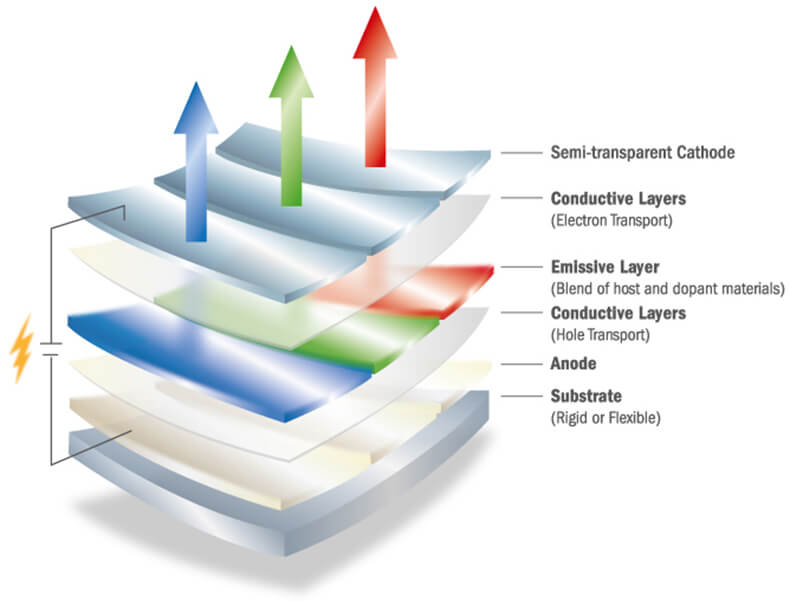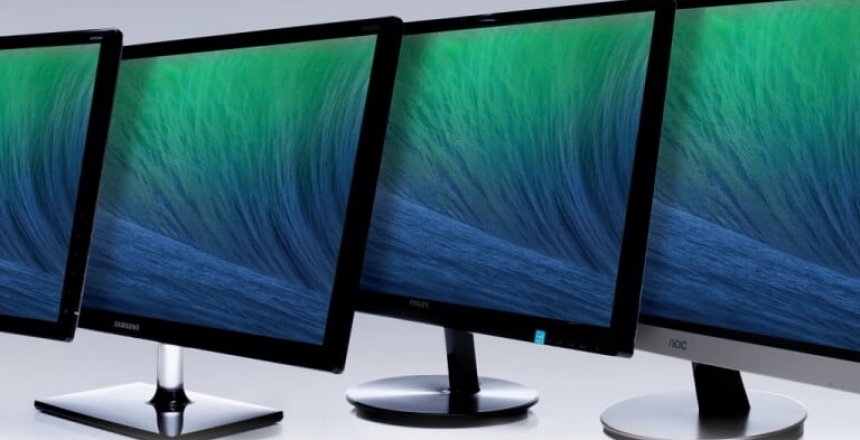Have you ever wondered how your computer or TV screen works? How do they get the colours on the screen and why plasma TVs were so expensive. Read on to find out more.

Cathode Ray Tube (CRT)
Cathode Ray Tube or CRT TVs and monitors work with an electron gun that sends a stream of electrons from the back of the display to the front.
At the back of the tube is a set of electromagnetic coils that deflect the beam of electrons. In technical terms with the PAL system used in the UK for television, the frame rate was 50 and the carrier frequency was 15,625KHz which gave 625 lines to each pass of the screen which enabled the PAL TV to show 25 frames per second.
A phosphor coating to the back of the screen would illuminate when a beam of electrons hit it.
Varying the intensity of these electrons and the brightness of the illumination changes.
Later, by using three different electron guns and a mesh, it was possible to energise three different phosphor colours on the screen which gave the basis of RGB display which when seen at a distance, would give colour.

Gas Plasma TV
Gas Plasma works with a different principle. There are coloured cells that contain a gas that has a set of conductors that run horizontally at the back and vertically at the front that when electricity is applied to them cause the gas to turn into a plasma and in that plasma state they emit UV light which excites the phosphors of each cell to glow and produce light.
Gas Plasma displays respond more quickly than other displays as it is a grid of cells that can be accessed by energising an X – Y grid to illuminate a cell. The downside is that this process also produces a lot of heat and the cells can get burnt in if energised for too long. Also the display is fragile.
Plasma Ball
I was taught as a kid at school that there were 3 states of matter:
An ice cube is the solid state of water, which melts into a liquid and when boiled turns into a gas called steam.
Some materials have a 4th state called plasma, which is like a gas but is affected by electromagnetic radiation.
The plasma ball is a great example of the 4th state. At it’s core is an energy source and inside the ball is a partial vacuum and a mixture of inert gases. A high voltage is applied at a high frequency to the core and the positive electrons energise the inert gases as they pass from the centre to the outside to discharge. The colours are the charge and discharge of the ions in the inert gases as the electrons pass from the core to the outside. When you touch the glass, these electrons pass through the glass and find a route to earth through your body.

Liquid Crystal Display
Liquid Crystal Display (LCD) uses a liquid in cells that block the passage of light. In order to create colour, there 3 cells in a row that are coloured to allow red, green and blue light to pass though when energised.
By energising a cell, the liquid becomes transparent and by varying the amount of energy, a different amount of light will pass through the display.
LCDs cannot produce their own light, so they need a light source.
OHP display
An overhead projector consists of a bright bulb and fresnel lenses that spread that light out evenly over the glass. The LCD panel is placed on the top and the lens and mirror arrangement turns the image 90 degrees to be projected to a white surface.
LCD Monitor or TV
In a monitor or TV, a fluorescent tube is mounted in the surround behind that provides a backlight to the screen and the fresnel lenses and diffusers spread the light evenly over the back of the display.
Inside the fluorescent tube is an inert gas, mercury vapour and a phosphor coating on the tube. When electrons are pushed into the emitter at each end, the mercury vapour emits UV light which is converted by the phosphor coating into light.
Light Emitting Diode
A Light Emitting Diode is a semiconductor where the electrons are transmitted in the form of light. The chemicals used to produce this light show a visible colour to the viewer. By combining red, green and blue LEDs, white light can be obtained. Although LEDs are used to display a screen, they are typically displayed at a distance, such as on a billboard where the space between the LEDs is not so visible.
Instead, LEDs are used as a backlight in most cases for an LCD display to replace fluorescent tubes because LED is much more energy efficient.
On modern TVs and monitors, the amount of light emitted from each LED is varied so that black areas on the screen appear more like black than a grey illumination that occurs when the whole back is illuminated.

Organic LED
Unlike LED displays (backlit LCD displays) Organic LED displays are made from layers of material to form a sandwich which form individual cells. In order to produce colour, there are separate layers of red, green and blue material.
Since the disply is self illuminated, the colours can be brighter and since turning off the layers means no light is produced, the blacks are clearly black. They do have the downside that a continuous image will burn-in the display.
OLED displays are more costly than LED displays.

Mini and Micro LED
A different way to deal with the problem of the light intensity problem for LED displays is using mini or micro LED clusters behind the display and then control their brightness. You get a bright display with much better defined black areas without the cost of the OLED display and since the display is lit from behind, there is no burn-in.
Mini and micro LED is cheaper to produce and serves as the future of display technology.

